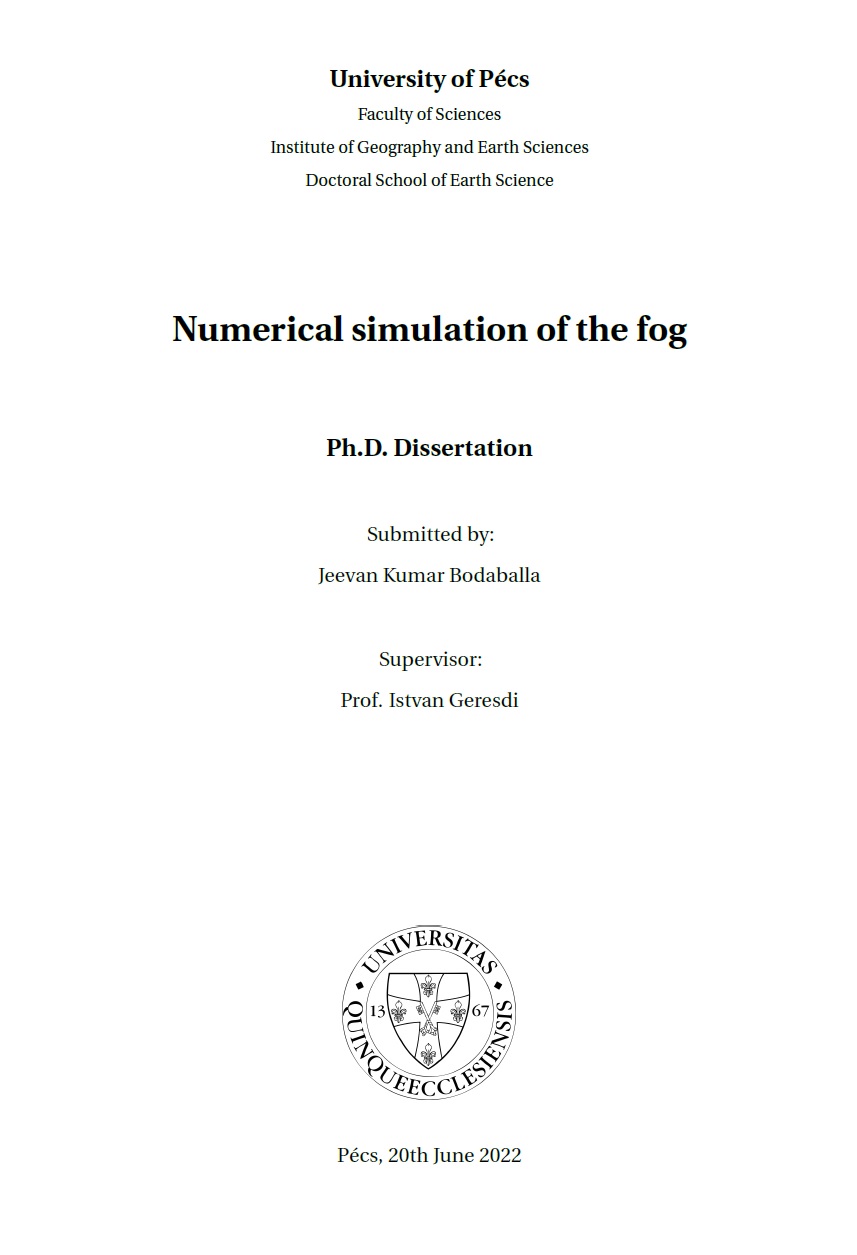Numerical simulation of the fog
Abstract
Fog forms, strengthen, and disperses due to complex interactions among
diverse local, microphysical, dynamical, radiative, chemical processes, and
boundary-layer conditions (Gultepe et al., 2007). Aerosol particles play a
vital role in fog formation, development, and dissipation. Furthermore, the
fog can also impact aerosol particles' characteristics (e.g., size distribution,
chemical composition). The primary sources of particle numbers in cities are
traffic, thermal power stations, factories and household emissions, and their
concentration is affected by advection and scavenging processes. While
scavenging by activation strongly depends on the chemical composition of
the particles (e.g., Gilardoni et al., 2014), the collision scavenges of particles
is mainly affected by size of the aerosol particles and that of the water drops.
The chemical composition and the size distribution of aerosol particles are
affected by their sources, gas-phase chemical reactions and microphysical
processes, and chemical reactions that occur in the water drops. Dissolution
of some ambient gases into droplets and the subsequent aqueous-phase
chemical reactions can also modify the particle size (Kerminen and Wexler,
1995; Meng and Seinfeld, 1994). Besides, considering the chemistry in the
numerical simulation of fog is a great challenge due to the strong interaction
between the different chemical processes and due to the lack of observational
data of trace gases and various relevant inorganic and organic compounds for
validating the models.
In this study a recently developed bin scheme (Schmeller and Geresdi, 2017)
was used in a one – dimensional (1D) model to investigate, how the
environmental conditions affect the physical and chemical characteristics of
the fog. Although the 1D models cannot simulate some crucial characteristics
of the fog (e.g., turbulence, radiative cooling, sedimentation), they allow for the very accurate simulation of specified processes such as microphysical and
chemical processes. For example, Xue et al. (2019) carried out 1D model
experiments using a bulk liquid chemistry scheme incorporating detailed SO2
oxidation chemistry to derive SO4
2- production over the full range of SO2
atmospheric concentrations. Furthermore, rigorous model studies have been
made to improve fog forecasting over this region (Pithani et al., 2020, 2019a,
2018). However, there is considerable scope to improve forecasting and
detailed understanding of fog microphysics and chemical properties during
the fog life cycle.

